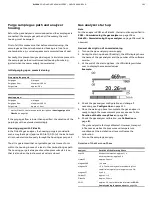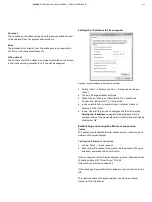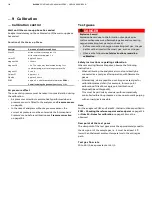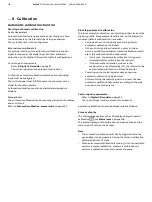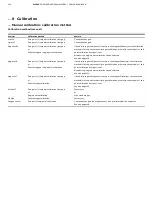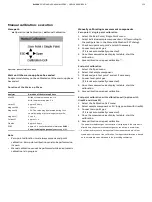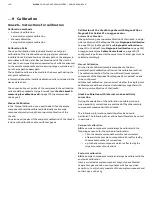
116
EL3000
CONTINUOUS GAS ANALYZERS | OI/EL3000-EN REV. D
… 9 Calibration
… Calibration control
Wait until the warm-up phase has ended
Analyzer module may not be calibrated until the warm-up phase
has ended.
Duration of the Warm
-
up Phase
Analyzer
Duration of the Warm-up Phase
Uras26
Without thermostat: approx. ½ h
With thermostat: approx. 2 h
Limas23
Approx. 2 hours
Magnos206
< 1 hours
Magnos28
< 5 h, The value may be elevated during first
commissioning or after a longer service life.
Magnos27
2 to 4 h
Caldos27
Approx. ½ h
Fidas24
Approx. 2 hours
ZO23
approx. 2 h, see for detailed information
Commissioning the gas analyzer
Air pressure effect
The current air pressure must be taken into consideration during
the calibration.
• Air pressure correction is automatically performed when a
pressure sensor is fitted to the analyzer, see
on page 36.
• In the case of analyzers without a pressure sensor, the
current air pressure must be entered via the ‘Atmospheric
Pressure’ menu before calibration, see
on page 194.
Test gases
DANGER
Explosion hazard
Explosion hazard due to the formation of explosive gas
mixtures when measuring flammable gases and connecting
oxygen-containing test gases (such as air).
• Before connecting an oxygen-containing test gas, the gas
path must be rinsed with an inert gas, such as nitrogen.
• Observe the following
safety instructions regarding
calibration
.
Safety instructions regarding calibration
When measuring flammable gases, observe the following
instructions:
• When calibrating the analyzers, air must not directly be
connected as a test gas after operation with flammable
gases.
• Alternatively, where possible, use nitrogen as test gas for
calibration instead of air (for example, for zero point
calibration of Uras26 or single point calibration of
Magnos206 and Magnos28).
This must be particularly considered for automatically
controlled calibration processes, since no automatic purging
with an inert gas is possible.
Note
For the analyzers ZO23 and Fidas24, the instructions specified in
ZO23 – Checking the reference point and end point
Fidas24 – Notes for calibration
on page 136 must be
observed.
Dew point of the test gases
The dew point of the test gases must be approximately equal to
the dew point of the sample gas, i.e. it must be at least 5 °C
lower than the lowest ambient temperature in the entire gas
path.
Test gas flow rate
30 to 60 l/h, keep constant at ±5 l/h


